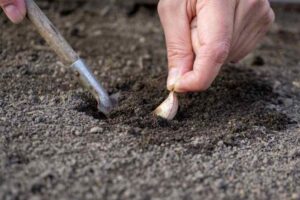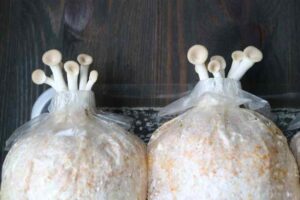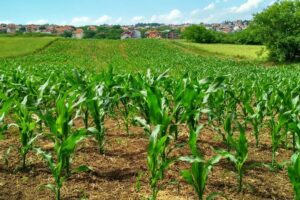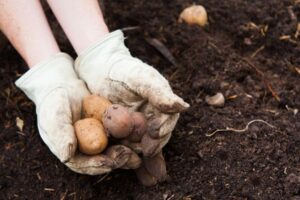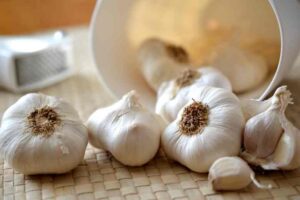
In Texas, the optimal time to plant corn is usually between late March and early May. This is when the soil temperature is warm enough and there is enough moisture in the soil for the corn to germinate. It’s important to ensure the area where the corn will be planted has good drainage so the roots don’t become waterlogged.
The best time to plant corn in Texas also depends on the region and the specific variety of corn. Some varieties of corn may require earlier planting, while other varieties may be planted later in the season.
Overview of Corn Planting in Texas
Corn planting in Texas is a long-standing tradition, and one that many farmers take seriously. The state’s large agricultural industry relies heavily on corn planting to provide a steady crop of high-quality produce that can be used for a variety of purposes, from food production to fuel. Texas has a favorable climate for growing corn, with high temperatures and plenty of sunlight during the growing season.
Planting corn in Texas requires careful planning and preparation, as well as the right tools and equipment. Farmers must take into account soil quality, climate conditions, and other factors to ensure a successful crop.
Planting in the springtime can help maximize yields, as can using the right seed varieties and fertilizer. With careful planning and a little luck, corn planting in Texas can yield a harvest that farmers and consumers alike can enjoy.
Understanding the Climate of Texas
The climate of Texas is varied and unpredictable, making it essential to understand the weather patterns in order to properly prepare for any season. With its vast size, Texas is home to numerous climate zones, ranging from subtropical in the east to semiarid in the west.
Temperatures during summer months tend to be hot, while winters remain mild in the south and cold in the north. While the majority of Texas experiences a relatively mild climate, extreme weather events such as floods, severe thunderstorms, and even hurricanes are possible throughout the year.
By familiarizing yourself with the climate of Texas, you can be prepared for any weather-related surprises.
Types of Corn Suitable for Texas
Texas is a state known for its agricultural production, and corn is a major part of that. There are many different types of corn grown in the state, each providing a unique flavor, texture, and size. From sweet corn to dent corn, popcorn to flour corn, and everything in between, there is a variety of corn suitable for Texas. Sweet corn is the most popular variety for eating and is great for adding a sweet, creamy flavor to dishes.
Dent corn is most commonly used for animal feed and ethanol production, but also makes a great addition to soups and stews. Popcorn is a favorite for movie nights and can be used in a variety of recipes for added crunch.
Flour corn is a great option for making homemade tortillas, tamales, and other flatbreads. No matter what type of corn you’re looking for, you’re sure to find something suitable in Texas.
Best Time to Plant Corn in Texas
If you’re looking to plant corn in Texas, timing is everything! The best time to plant corn in Texas is typically during the spring, when days are warmer and soil is moist. It’s important to get the crop in the ground as early as possible to take advantage of the full growing season. Planting in the middle of March or early April is ideal for most regions of Texas.
When planting, be sure to check the soil temperature to ensure the ground is warm enough for the seeds to germinate. Additionally, remember to use the proper fertilizers and irrigation techniques to ensure your crops succeed. With the right timing, soil preparation, and care, you’ll be harvesting a bumper crop in no time!

Preparing the Soil for Planting
Preparing the soil before planting is an important step in the gardening process. A well-prepared soil helps to ensure your plants grow and thrive. It also helps to ensure that your plants are getting the nutrients they need for optimal health.
Preparing the soil involves removing any rocks, weeds, and other debris, and adding organic matter such as compost to improve the soil’s texture and nutrient content. It also involves performing a soil test to determine the pH of the soil and adjusting the pH if needed.
Taking the time to prepare the soil before planting will ensure that your plants have everything they need to be successful.
Planting Guidelines for Corn in Texas
Corn is a popular and versatile crop that can be used for a variety of purposes, from food production to animal feed. In Texas, the climate is ideal for growing corn, but it is important to follow the right planting guidelines to ensure a successful harvest. The best time to plant corn in Texas is between late February and April, when the soil is warm and moist.
It is important to choose a soil type with adequate drainage and fertility, and to till the soil to a depth of at least six inches before planting. Plant the seeds three to four inches deep, in rows that are spaced two to three feet apart.
Once the plants have emerged, thin them to one plant per foot of row. Make sure to keep the soil moist, and use a light fertilizer when the plants reach a height of 4-5 inches. With proper planting and care, you can enjoy a bountiful corn harvest in Texas!
Techniques for Maximizing Yield
Maximizing yields can be an important goal for any crop farmer. Yields are the measure of the amount of produce from a crop or a given area. Techniques for maximizing yields include crop rotation, fertilization, irrigation, pest control, and soil management. Crop rotation helps maintain soil fertility, reduce pest and disease pressure, and prevent soil erosion.
Fertilization helps plants absorb essential nutrients and encourages healthy growth. Irrigation can help ensure plants get adequate water, while pest control helps reduce damage from insects, weeds, and other pests. Soil management techniques can increase water retention, improve drainage, and reduce compaction. Implementing these techniques can help maximize yields and ensure a successful crop.
Managing Pests and Diseases in Corn Fields
Pest and disease management is an essential part of corn production. Without proper management, corn fields can suffer from extensive damage which affects yield and quality. An integrated pest management system is the most effective way to manage pests and diseases in corn fields.
This system includes using physical barriers, selecting resistant varieties, monitoring for pest and disease activity, and applying appropriate chemical and biological control measures.
It is also important to regularly scout the field and rotate crops to reduce the potential for pest and disease outbreaks. With proper management, corn producers can ensure a successful harvest and protect their fields from pests and diseases.
Conclusion
In general, the best time to plant corn in Texas is in late March or early April, when the soil temperature is at least 50 degrees Fahrenheit. Planting too early in the spring can result in frost damage, as well as other risks associated with cold weather. To ensure a successful harvest, corn should be planted when the soil temperature has warmed and the danger of frost has passed.


